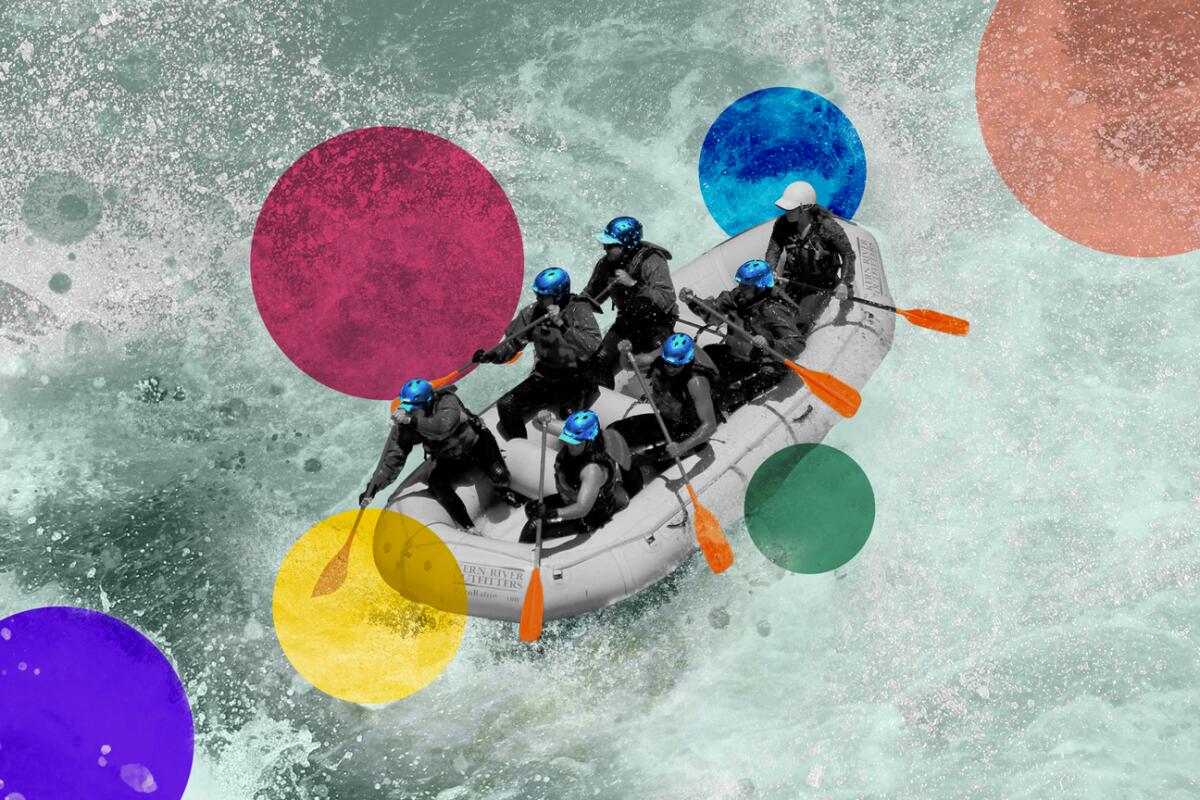
The time to book your whitewater rafting trip is now. Here are California’s 8 best rivers
- Share via
When I taught whitewater kayaking classes at UC Davis, I liked to tell my students that every year, I got to enjoy California’s snowpack twice: Once in the winter when I went skiing, and then again in the spring and summer when the snow melted and tumbled down from the Sierra in rivers — with rapids ready for rafting.
(OK, and perhaps a third time to shower or drink a glass of water, depending on where I was living.)
This year’s snowpack is on the light side at around 65%, which means that most of California’s streams will have shorter seasons. But for rivers that are backed up by water-storing reservoirs — such as the Tuolumne and the American — boats will be bounding over cascades large and small into August and perhaps beyond.
Here’s a rundown on eight of the state’s best whitewater streams, where outfitters offer mellow trips suitable for nervous novices to those who don’t mind occasional raft flips or a swim downstream. Gulp!
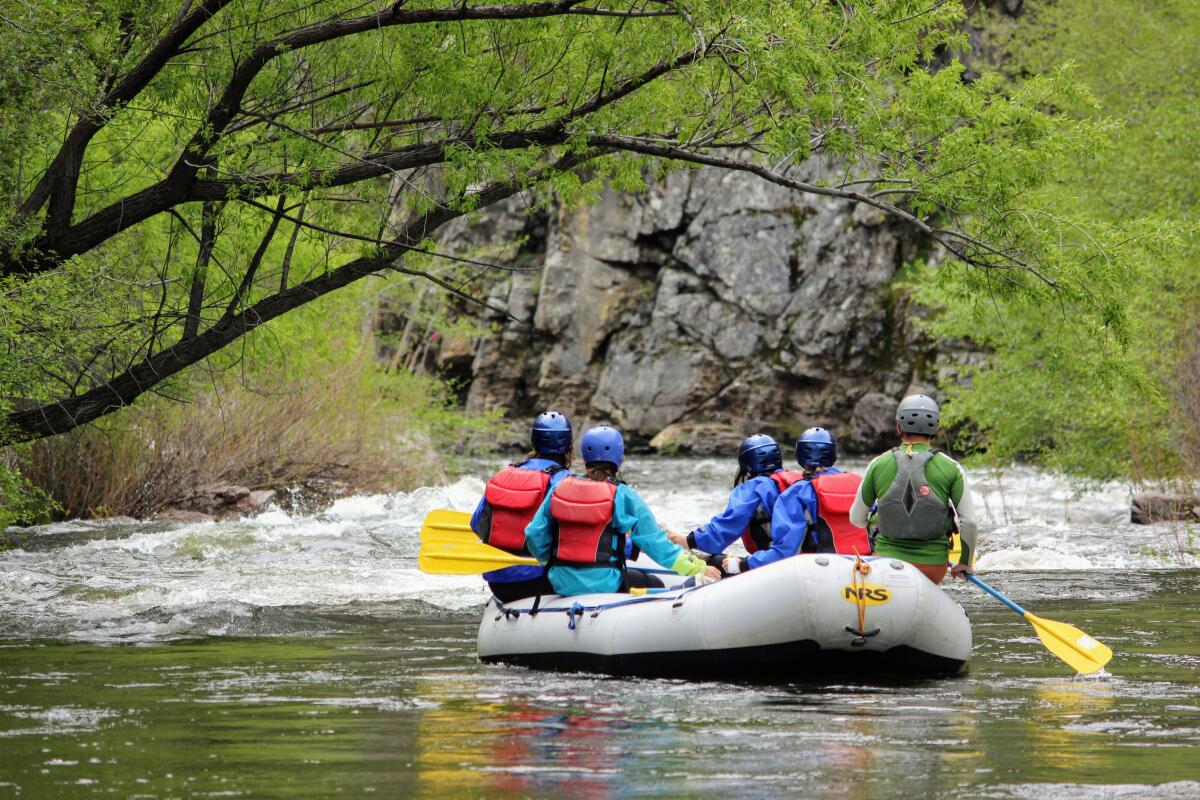
Kern River
The Lower Kern section flows from June into August, when farmers release water from the Lake Isabella reservoir and the river tumbles through a granite canyon. The eight-mile, family-friendly “Jungle Run” has gentle, Class II and more exciting Class III rapids with names like “Wasco’s Wash” and “It’s a Dilly.”
The Upper Kern, which flows into Lake Isabella, also offers Class II, III and IV rapids on shorter sections with names like “Lickety” and “Limestone” and is suitable for families with older kids. Commercial outfitters will begin offering trips here in early April that will end in June because the river is dependent on snowmelt.
For those who like big-time thrills and are fit, the Forks of the Kern trip has more than 100 Class III, IV and V (technical and scary) rapids on a two-day outing that covers 21 miles and starts with a 2.5-mile hike to the river put-in. This section of the river was closed the last two years because of dangerous burned trees overhanging the trail.
Insider tip: If you go on the Forks adventure, be sure to hike up Meadow Creek to the Seven Teacups, where the freshet cascades into pools carved out of granite.

Kings River
This fun Class III snowmelt stream has about 25 rapids with names such as “Mule Rock,” “Fang Tooth” and “Sidewinder.” The Kings should be flowing into at least early July. It’s a bit off the beaten path, about a 3½-hour drive from L.A.
Insider trip: Since you’ve probably traveled a distance to reach the Kings, consider overnighting. King’s River Expeditions offers two-day trips that include a barbecue dinner with ice cream sundaes, camping at its base camp, a hearty breakfast and a second 10-mile run.
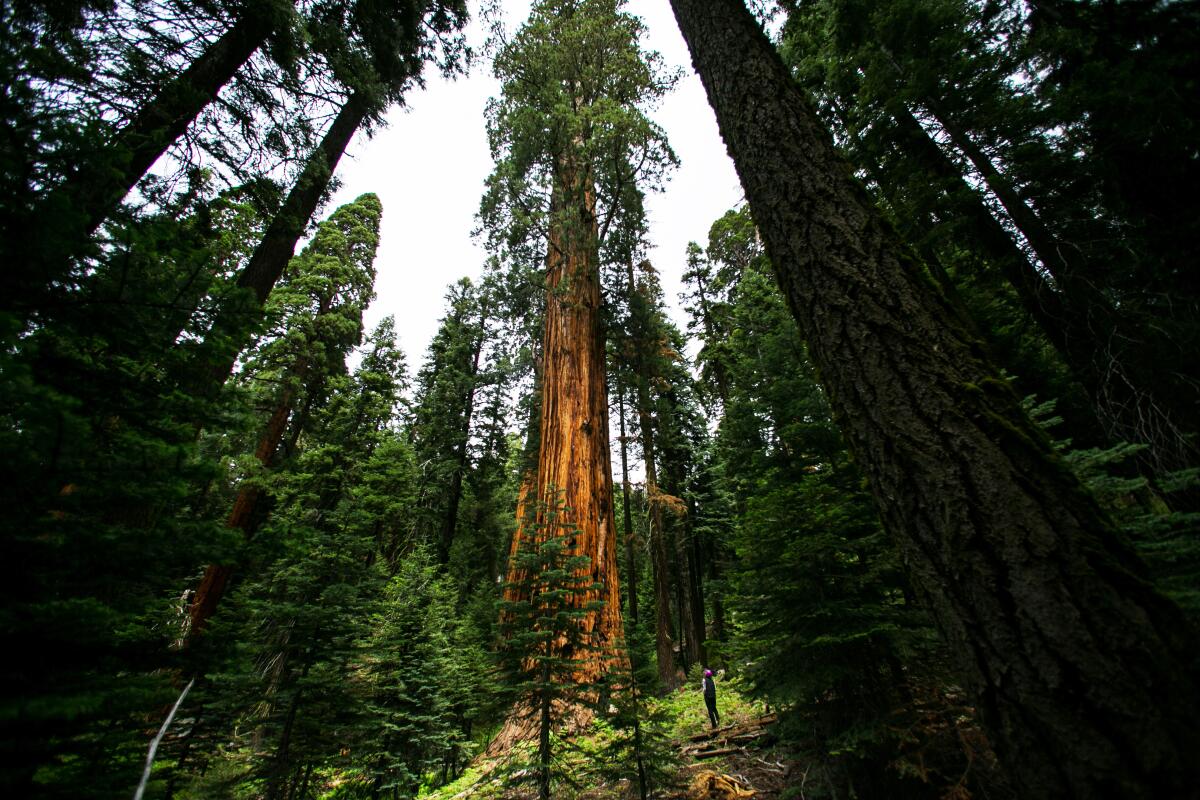
Kaweah River
Insider tip: Since you’re close, head on up to Sequoia National Park and check out the Giant Forest, where five of the 10 largest trees on Earth are located, including the General Sherman Tree, which measures more than 36 feet across its base. Fortunately, this grove was not affected by last year’s devastating fires.
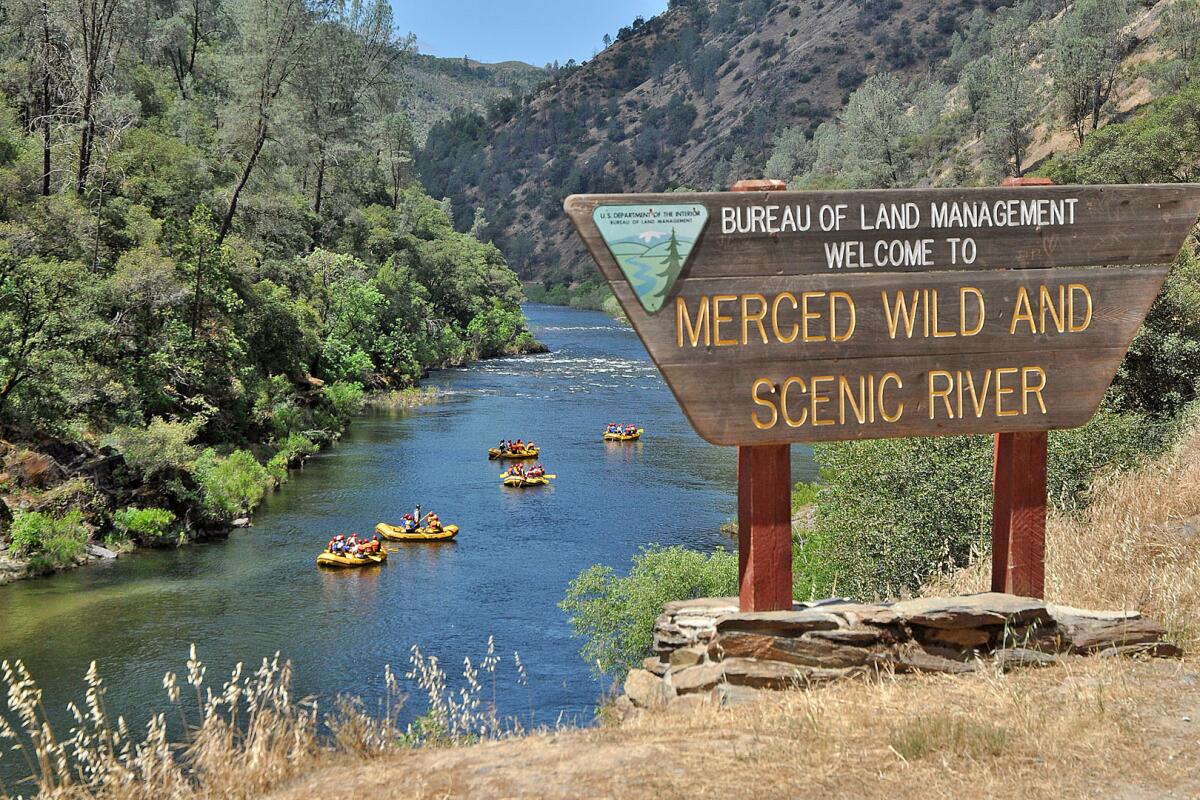
Merced River
Outfitters will run trips on a 16-mile stretch of the Merced starting in April and going into June. It’s suitable for aggressive beginners.
Insider tip: Do the Hite Cove hike on the South Fork of the Merced River in April while there’s still an explosion of wildflowers. It’s an easy, 6-mile round trip that starts at Savage’s Trading Post on Highway 140.
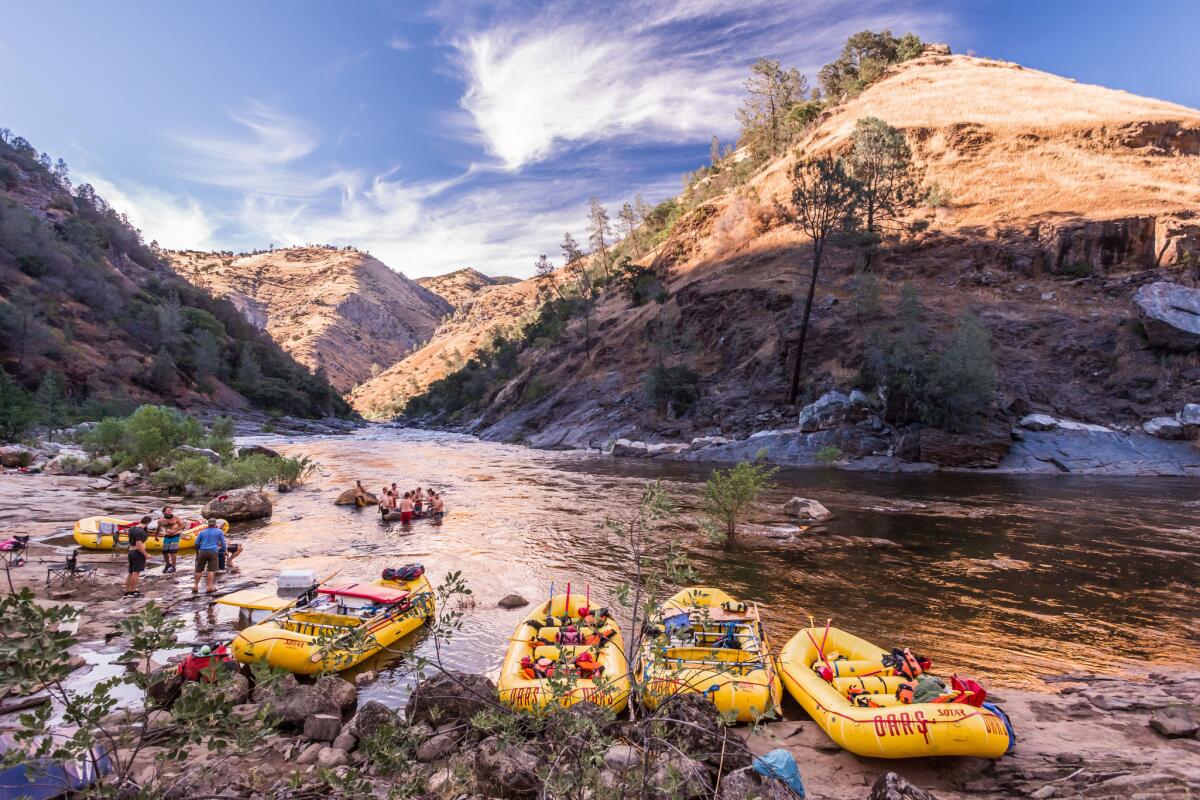
Tuolumne River
This Class IV-plus cascade tumbles 8 feet, has two big drops in it, regularly flips rafts and sometimes sends folks swimming. There are plenty of other Class IV rapids on the river too, with names such as “Nemesis,” “Sunderlands Chute,” “Ram’s Head” and “Grey’s Grindstone.”
A one-day trip is all adrenaline, while two- and three-day outings offer more time to relax and explore side canyons. Due to releases from the Hetch Hetchy Reservoir upstream, the “T” — which also has a Wild and Scenic designation — will be good for rafting into September.
Insider tip: If you get the chance, be sure to hike up the Clavey River and North Fork canyons to swim in pools and launch yourself off jump rocks.
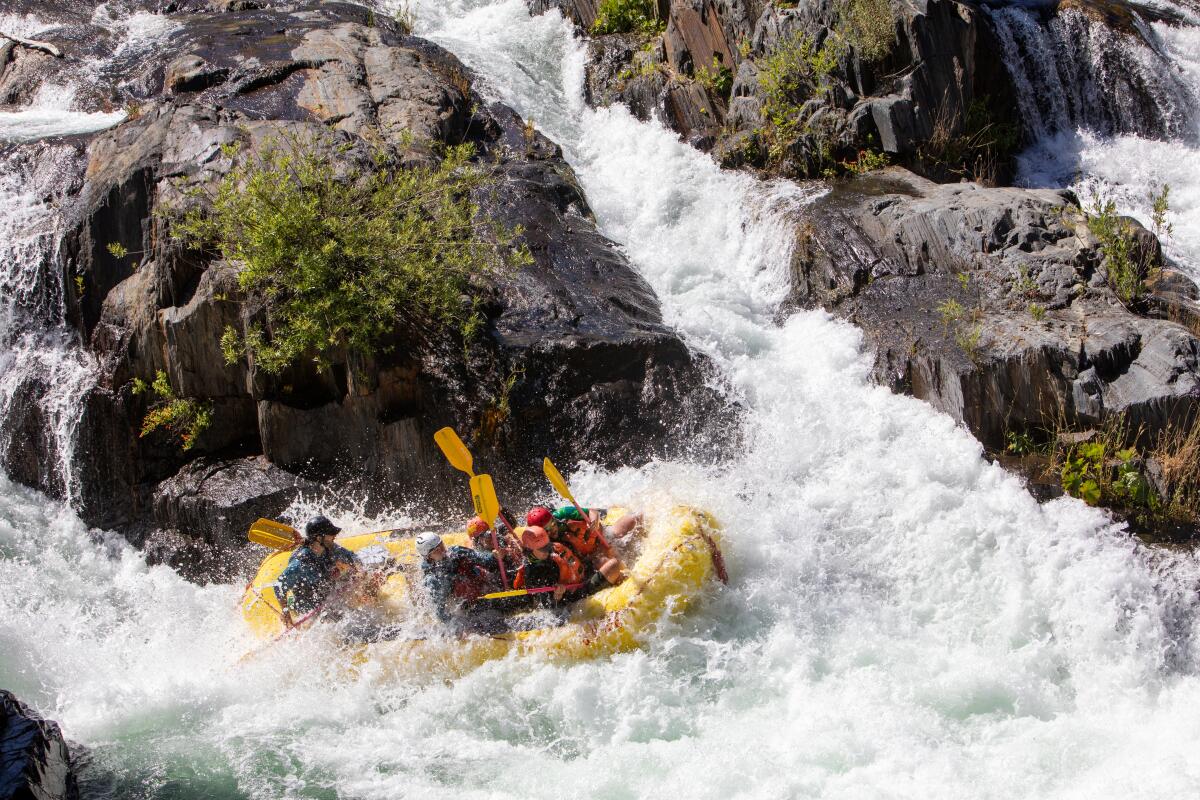
Middle Fork of the American River
It tumbles down a pristine, secluded canyon through what the Angels Camp-based Oars rafting company calls a “melee of pounding whitewater” on rapids such as “Guide Slammer,” “Organized Chaos,” “Cartwheel” and the Class V “Ruck-a-Chucky,” which is so perilous that passengers must walk around it.
In 1889, in search of gold buried beneath the river, miners blasted a tunnel through the side of a cliff to divert the water, creating one of the most unusual whitewater features anywhere in the world.
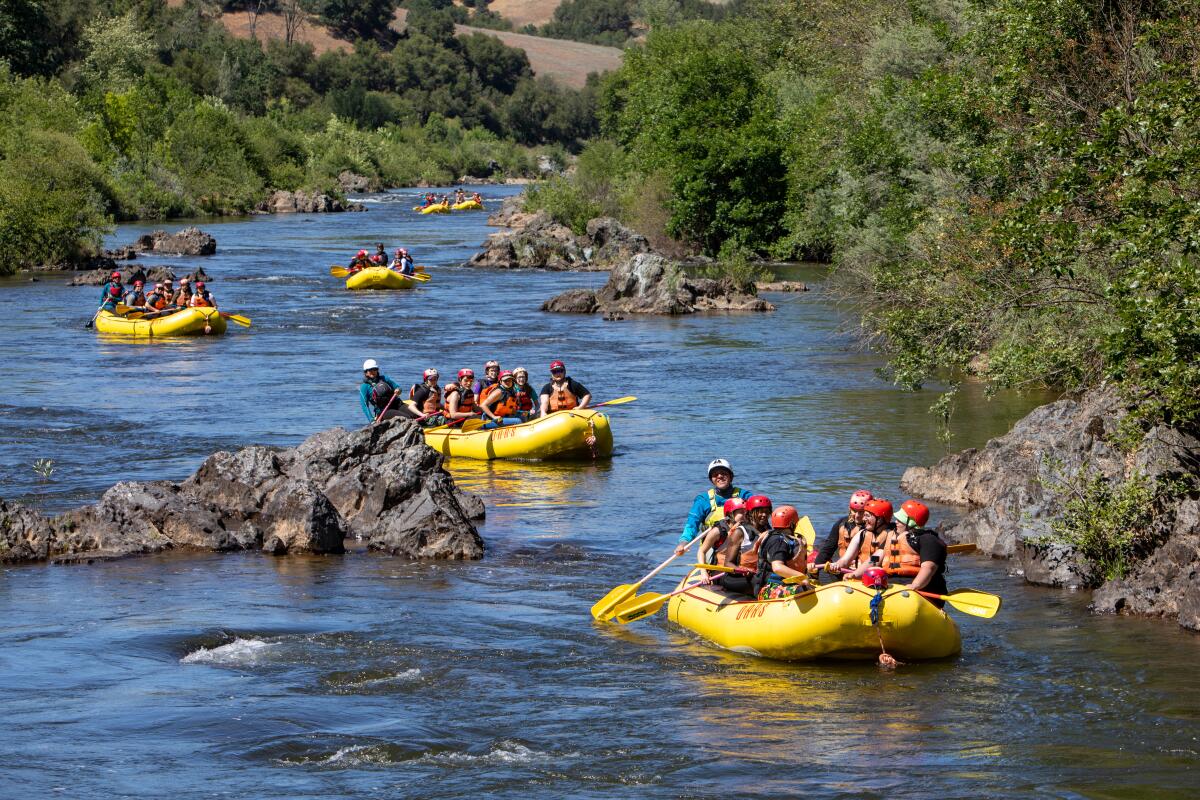
South Fork of the American River
The upper section of the trip starts at a put-in called Chili Bar and rolls downstream through small cascades with names like “Meatgrinder,” “Troublemaker” and “Triple Threat.” The lower Gorge run is home to one of my favorite rapids. Dubbed “Satan’s Cesspool,” it’s a devilish rapid that’s flipped my kayak a time or two.
Insider tip: A number of raft companies offer “elevated” camping on the river with showers, flush toilets and even safari tents. And if you are a history buff, check out Marshall Gold Discovery State Park in Coloma, which has a museum, original and restored buildings and docents in Gold Rush period costumes.
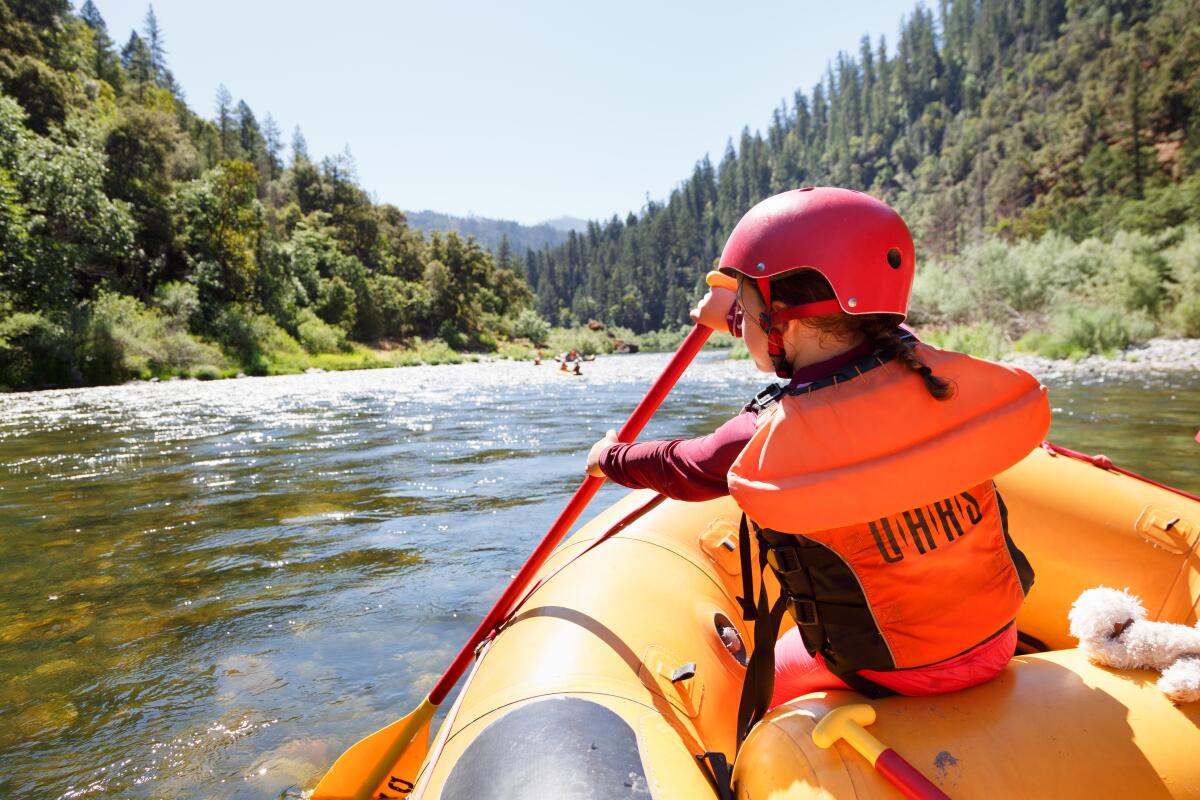
Lower Klamath River
Another of California’s Wild and Scenic Rivers, it flows 180 miles from just south of the Oregon line to the Pacific. Rafting companies offer two- and three-day outings on a 20-plus mile section of the “Klam,” which boasts warm water, swimming holes, gentle Class II rapids and a couple of mild III’s with names like “Savage” and “Dragon’s Tooth.”
Insider tip: Bring your binoculars because the Klamath hosts eagles, ospreys, egrets, herons, ducks, mergansers and other birds. Oh, and yeah — ask your guide to tell you some Big Foot stories. You might even see a black bear, which is sorta-kinda like Big Foot.
Sign up for The Wild
We’ll help you find the best places to hike, bike and run, as well as the perfect silent spots for meditation and yoga.
You may occasionally receive promotional content from the Los Angeles Times.



